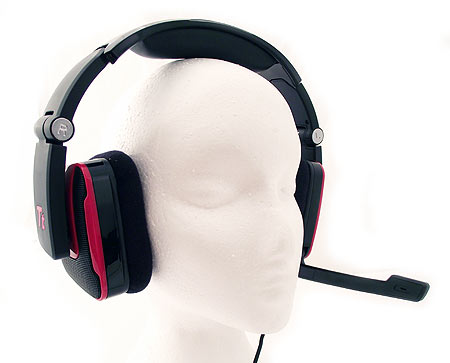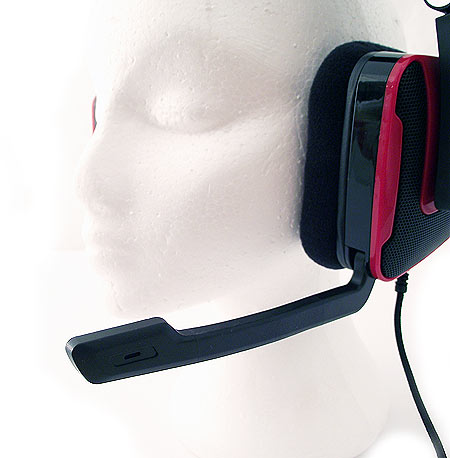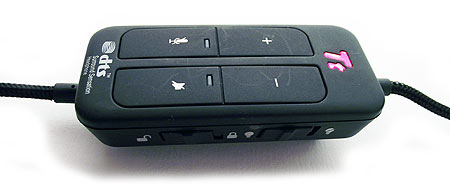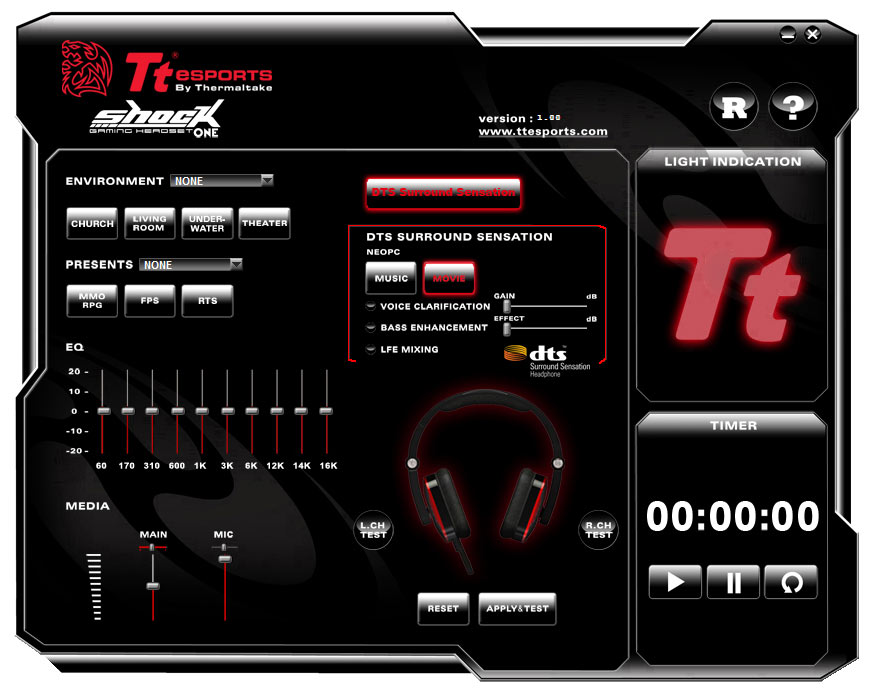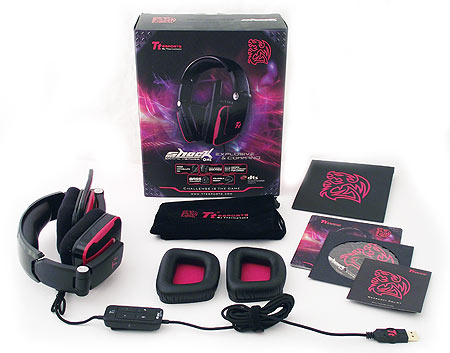Eight 5.1- And 7.1-Channel Gaming Headsets, Reviewed
Surround sound headsets are often more practical than a home theater system attached to your PC. We compare eight premium models from Arctic, Psyko, Cooler Master, Logitech, Creative, Thermaltake, Corsair, and Razer to figure out who sells the top option.
Thermaltake eSports Shock One
Thermaltake is another company better known for its other peripherals, cases, and power supplies, but now active in the audio space, too. We're reviewing its flagship Shock One.
This headset bears a $93 price tag, and its construction and style compare favorably to sub-$100 competition, such as Arctic's P531 and Creative's Tactic 3D Sirus. It has flashy add-ons like illuminated logos and red glossy highlights on the ear cups. More square-shaped than other units seen in today's piece, its departure from the norm is refreshing. At 11.2 oz, the Shock One is relatively light, although we find that it fits a little too snugly for long-term gaming sessions, even if it's comfortable for short stretches.
The boom-mounted microphone swivels up like other models in this round-up. Our microphone tests reveal really bright sound with little response in the lows and mids, but a significant amount of background noise. It’s our least-favorite microphone in the comparison.
As with other stereo headsets purporting to offer virtual surround sound, each can employs a single 40 mm driver rated between 20 Hz and 20 kHz. The headset employs DTS Surround Sensation, an audio technology that claims to enhance voice frequency bands, broaden the sound stage, creating a phantom center channel (a perpetual issue for headphones), and enhance bass.
The inline control pod is built well and simple to use. Plus, it includes a clip for attaching to clothes. You get volume buttons, mic mute, a headset mute button, an illumination toggle switch, and a lock to prevent accidental setting changes. We really like the idea of the lock, especially.
The Shock One is designed exclusively to work with USB, and there is no option for analog connectivity.
The software includes environmental effects controls, an equalizer, mic and sound level sliders, a DTS Surround Sensation toggle, a timer (Ed.: Wait, what?), and a light indicator. The DTS Surround Sensation controls are used to convert two-channel audio into virtual surround sound, and the technology really does an impressive job.
We did come across a strange issue where the Shock One wouldn't play back the subwoofer's content unless LFE mixing is enabled. To make matters worse, this option cannot be selected in two-channel mode. It can only be turned on when DTS Surround Sensation is enabled. Because DTS Surround Sensation is designed to convert two-channel audio into surround, it doesn't work for positional audio in games. So, if you want to hear bass in games, you have to turn on DTS Surround Sensation, enable LFE, and then disable DTS Surround Sensation. The system will remember the LFE setting, even though the interface shows it greyed out. This is a fairly serious undocumented issue, and I hope Thermaltake addresses it with a driver update.
The bundle includes a second set of ear cups with cloth finish instead of leatherette (and as we mentioned before, they're much more comfortable), a velvet carrying bag, a quick install guide, a driver disk, and a warranty card.
Current page: Thermaltake eSports Shock One
Prev Page Razer Megalodon Next Page Test Setup And BenchmarksGet Tom's Hardware's best news and in-depth reviews, straight to your inbox.
Don Woligroski was a former senior hardware editor for Tom's Hardware. He has covered a wide range of PC hardware topics, including CPUs, GPUs, system building, and emerging technologies.
-
cleeve spookiegreat read! Never thought virtual surround sound was that goodReply
Yeah, me neither. Surprised the hell out of me.
-
Thanks Toms for doing a review on 5.1 headsets. I been researching one for the past two weeks on other review websites, and online stores, but didn't feel satisfied. Could you guys do a review comparing these headsets you reviewed already to a dedicated audio card like the Asus Xonar Essence STX (with a pre amp) with a Sennheiser HD 598 Headphones (or HD 800)? I want to know if it is like night and day compared to these 5.1 headsets (also make readers see what they are missing from using onboard audio). I know its a few hundred dollars more, but i found out that i was more happy gaming with a $70 audio card than seeing 8x AA (using Nvidia Inspector) with a $500 GPU.Reply
-
cleeve bunnywannyCould you guys do a review comparing these headsets you reviewed already to a dedicated audio card like the Asus Xonar Essence STX (with a pre amp) with a Sennheiser HD 598 Headphones (or HD 800)? I want to know if it is like night and day compared to these 5.1 headsets (also make readers see what they are missing from using onboard audio).Reply
I like the idea, but it'll probably take a while to make it happen.
Next up on the audio to-do list is a full-sized 5.1/7.1 surround system comparo. :)
-
killeeeeer It would of been great if you tested the Roccat Kave but other than that great review. Been searching for headset for long time , now ill go with the Corsair Vengeance 1500 for sure .Reply -
crysex Thanks Toms so much for doing this review. I have been searching one for a long time. Ready to buy a good quality sound card + headset after my next paycheck!Reply -
iamtheking123 I'll stick to my $100 stereo headphones instead of $20 headphones + $80 spent on fake surround sound and marketing. We've all tried virtual surround sound in PowerDVD or WinDVD and it sucks. Makes everything sound underwater and no where close to having 5 actual speakers set up throughout a room.Reply -
tomfreak I am still sticking with more expensive traditional speakers, simply due to my ear need some air to breath. These headphone arent comfortable especially during summer.Reply
